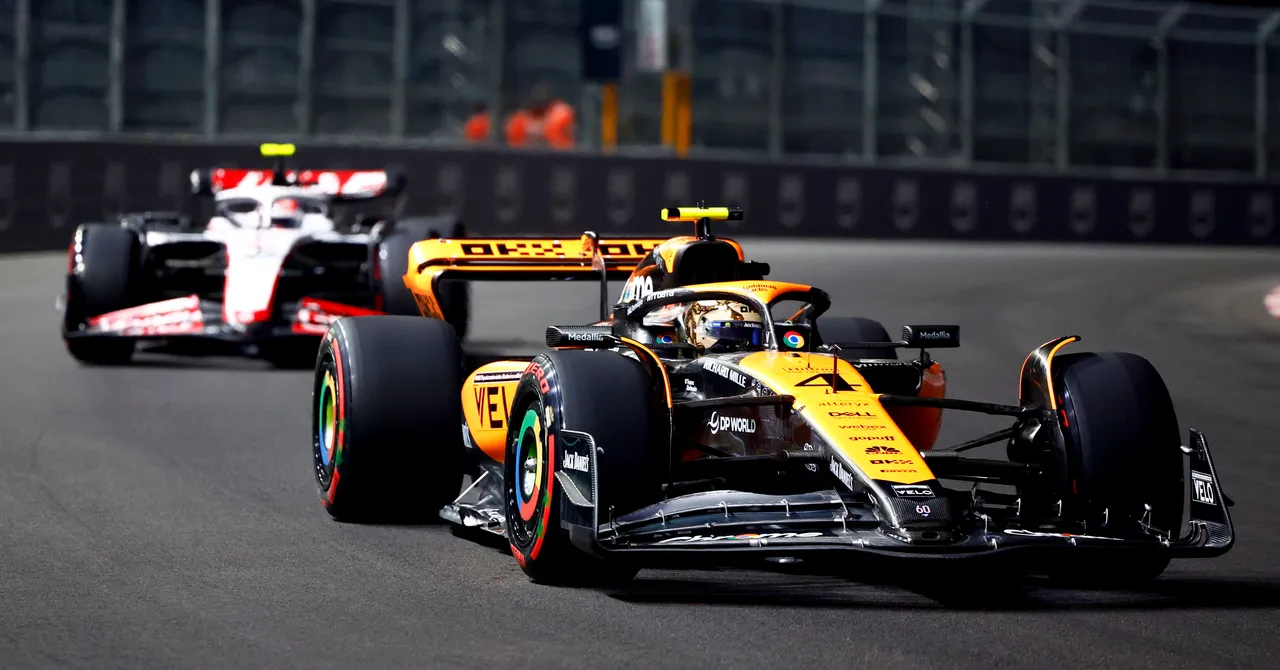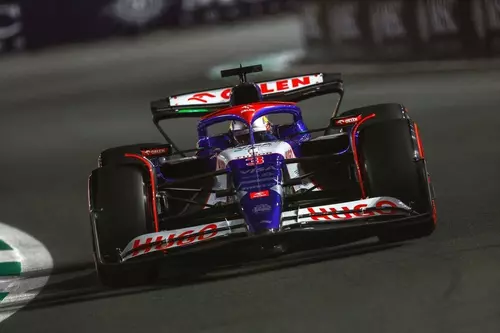Picture a car going around a track at 200 km/h, yet it remains on the ground as if someone were pressing it down. That's what makes Formula 1 racing so great! The way the car glides through air around it is the key, not simply the strong engine. How formula 1 car aerodynamics work the invisible forces known as aerodynamics allow Formula 1 vehicles stay on the track, speed up, and put turns without launching them into the air. Consider how a paper aircraft need the proper form in order to fly straight and far. For F1 vehicles to compete quickly and safely, they must be in ideal form. The air around us might seem empty, but when cars move really fast, that air becomes like thick honey. Smart engineers spend years figuring out how to make cars slice through this "thick air" while using it to their advantage. It's like surfing on invisible waves!
What Makes Formula 1 Cars So Special in the Air?
How formula 1 car aerodynamics work explained starts with understanding that these aren't just regular cars with fancy paint jobs. An F1 car's every curve, wing, and minute detail is made to function with the airflow related to it. You can feel the air pressing on your hand when you put it out of a vehicle window. Now picture that sensation, only a thousand times more intense! F1 cars deal with this massive air pressure every second they're racing.
These cars' engineers are a cross between a scientist and an artist. Similar to seeing invisible river flow over and under a car, they utilize special computers to observe how air travels around the vehicle. This helps them make the car faster and safer.
Read also: The Ultimate Guide to Formula 1 Cars for 2024
The Secret Language of Air and Speed

Air has its own special language when it comes to racing cars. F1 car airflow dynamics work like water flowing around a rock in a stream. When a car passes through the air, it must go a place. A portion of the air is forced to the sides, some passes below, and some passes over the top of the vehicle.
The trick is controlling where all this air goes. Smart engineers design the car so the air helps instead of fighting against the car. Think of blowing on a spoon - the air curves around it. In order to make them quicker and more stable, Formula One vehicles are built such that the air bends around them precisely.
How Formula 1 Car Aerodynamics Work to Create Downforce
Here's where things get really cool! Formula 1 down force explained is science, yet it seems like magic. Downforce is a force that you can't see that pushes an automobile down into the track. Picture yourself riding your bike quickly as the wind tries to lift you up. The purpose of Formula One vehicles is to press themselves down harder into the track by using the wind. They can round turns at amazing rates without slipping thanks to this. The downforce created by a car rises with speed. The vehicle seems to become heavier as it speeds up, but only in a positive manner that improves its bond to the track.
The Wings That Don't Make Cars Fly
If Formula One vehicles don't want to fly, you could ask why they have wings. When compared to aircraft wings, these wings are upside down! Air resistance in Formula 1 cars gets turned into a helpful pushing force instead of a problem. The front wing catches the air first and starts directing it around the car.
The rear wing at the back works like a big hand pushing the car down from behind. Together, they create tons of downforce. These wings can be adjusted too. On some tracks where cars need to go really fast in straight lines, they make the wings flatter. On twisty tracks, they angle the wings more to create extra downforce for better cornering.
The Amazing Ground Effect in Formula 1 Racing
The ground effect in Formula 1 is similar to having a vacuum below the vehicle, however it works the other way around! It sucks a car in to the track rather than sucking everything up. The bottom of modern F1 cars is specially shaped to create low air pressure underneath.
The car is pushed down by higher-pressure air when the air pressure beneath it is lower than that above it. To keep the car on the track, it seems as if nature wraps it tightly. An F1 vehicle traveling at full speed would likely be pushed into the track like a mark on paper if you were to quickly halt it because of how strong this ground effect is!
How Formula 1 Car Aerodynamics Work With the Track Surface
The closer the car gets to the track, the stronger the ground effect becomes. Aerodynamic balance Formula 1 teams work hard to find the perfect height where the car gets maximum downforce without scraping the bottom on bumpy parts of the track. Engineers use special sensors to measure exactly how much the car is being pushed down. They can adjust the car's height by tiny amounts - even smaller than the thickness of a coin - to get the perfect balance.
Read also: The Ultimate Guide to Securing Your F1 Las Vegas
Fighting the Air: Understanding Drag in F1 Racing
Not all air effects help the car go faster. The goal of F1 car drag reduction is to resist the air's attempt to slow the vehicle down. Drag keeps pulling the car backwards like an unseen rope attached to the rear. Drag occurs by every poorly smooth area of the vehicle. A car may be slowed down by even little edges or bumps.
Because every surface has been carefully designed to allow air to pass easily, Formula One vehicles seem very sleek and smooth. Millions of dollars are spent by teams to make their vehicles a little bit smoother. The margin between winning and losing a race might sometimes be as little as your fingernail!
The Battle Between Speed and Grip
This is when it becomes tough. The dispute between F1 aerodynamics and fuel economy never stops. Since raising downforce improves handling, it also raises drag, which slows the vehicle down on straight. Engineers must strike the ideal balance. On straight roads, the car is weak due to excessive downforce. A car cannot turn turns quickly enough if there is little downforce. It's similar to try to walk a tightrope! Various setups must exist for different songs. Monaco has lots of tight corners, so cars use maximum downforce. Monza has long straights, so teams reduce downforce to go faster in straight lines.
The Smart Design of Formula 1 Car Nose Cones
Formula 1 car nose cone design is like the car's pointy nose that cuts through the air first. This part of the car is super important because it's the first thing that meets the rushing air. The nose cone has to split the air cleanly and send it to all the right places around the car.
Some air goes over the top, some goes underneath to create ground effect, and some goes to the sides to cool the brakes and engine. Modern nose cones look weird and wonderful because they're designed by computers that can see air flow patterns invisible to our eyes. What looks strange to us is actually perfect for controlling air flow.
How Air Gets Directed Around the Car
Think of the nose cone as a traffic director for air. F1 car cooling and airflow systems depend on getting the right amount of air to the right places at the right time. The engine needs cool air to prevent overheating. The brakes need air to stay cool during hard braking. The driver needs air for breathing and staying comfortable. All of this has to happen while maintaining perfect aerodynamics.
Keeping F1 Cars Stable at High Speeds
When vehicles rush around courses at amazing speeds, F1 car high-speed stability is essential. When engineers work on Formula One vehicles, it's like trying to keep a pencil on a finger while you're racing. The fancy terms yaw and pitch in F1 aerodynamics refer to the way the vehicle flows in the air.
Yaw is when the car turns left or right. Pitch is when the front or back of the car goes up or down. Both need to be controlled perfectly. Special parts of the car work like invisible hands keeping everything stable. Small fins and winglets help the air flow stay attached to the car even when it's turning fast or going over bumps.
The Challenge of Changing Conditions
Wind can completely change how the car behaves. A side wind can push the car sideways. A head wind can slow it down. A tail wind can reduce downforce. Turbulence control in F1 helps deal with these challenges. Drivers have to adjust their driving style based on wind conditions. Engineers can make small changes to the car setup between practice sessions to compensate for changing weather.
How Formula 1 Car Aerodynamics Work in Different Weather
Rain changes everything! How formula 1 car aerodynamics work diagram patterns look completely different when it's wet. Water on the track reduces grip, so cars need different aerodynamic setups. Wet weather wings create more downforce to help push the tires onto the slippery track.
Special rain tires work with the aerodynamics to find grip where dry tires would just slide around. Teams practice in different weather conditions to understand how their aerodynamic package performs. What works perfectly on a sunny day might be dangerous in the rain.
Adapting to Track Conditions
Each racing track is different. Some have long straight sections where low drag is important. Others have many tight corners where maximum downforce helps. Aerodynamic balance Formula 1 teams adjust their cars for each specific track.
Engineers study every track carefully. They are well aware of the areas where vehicles will require most downforce, turn the hardest, and travel at fastest speeds. This information helps them set up the car perfectly for each race.
Read also: How Mclaren Chased A Top Speed Boost At F1's British
The Future of F1 Aerodynamics
The science of how Formula 1 car aerodynamics work keeps getting more advanced every year. New materials make cars lighter and stronger. Better computer programs help engineers see air flow patterns more clearly. Future F1 cars might use active aerodynamics - parts that move and change shape while driving to optimize performance for different parts of the track.
Imagine wings that automatically adjust themselves for every corner! Environmental concerns are also pushing innovation. Teams are working on aerodynamic designs that help cars go just as fast while using less fuel and creating less environmental impact.
Technology That Helps Everyone
The aerodynamic technology developed for F1 racing doesn't stay on the track. Many innovations end up in regular cars, making them more fuel-efficient and safer. Wind turbines use F1 aerodynamic knowledge to generate more clean energy. Even buildings and bridges use lessons learned from F1 aerodynamics to handle wind better. The pursuit of speed on the race track helps improve technology for everyone.
Why Understanding F1 Aerodynamics Matters
Learning about F1 car airflow dynamics helps us understand the amazing science happening all around us. Every time you watch an F1 vehicle race, you're seeing the result of years of engineering and scientific study. The next time you see a Formula 1 race, you'll realize that the cars aren't simply traveling quickly; they're using physics to defy physics and physics in the most amazing manner possible by surfing on invisible air waves.
How formula 1 car aerodynamics work explained shows us that the most exciting racing in the world is also some of the most advanced science in the world. Every race is like a high-speed science experiment where the fastest learners win!
The most intense motorsport on the planet is the result of the union of speed, science, and human talent. Knowing the aerodynamics allows you to observe the unseen forces that push these amazing vehicles to their limits, which increases the thrill of watching Formula One racing.
From the formula 1 car nose cone design splitting the air at the front to the rear wing pressing the car down at the back, every element works together in perfect harmony. It's engineering poetry written in the language of speed and science.
FAQ's: How Formula 1 Car Aerodynamics Work
How does aerodynamics work on a F1 car?
The aerodynamic areas at the front of the vehicle break up the smooth airflow and utilize it to create downforce. This pulls the car down onto the track, which lets it travel around a bend faster. When an automobile is following another car, it travels through dirty air.
How do F1 cars rev so high?
Advances in metals and design have made it feasible for Formula One engines to reach such high rpms. This is because lighter pistons and linking rods can handle the accelerations needed to reach such high speeds.
What is the Bernoulli's principle in F1?
As per Bernoulli's Principle, as the speed of a fluid goes up, the pressure goes down at the same time. Air acts like a liquid in an F1 vehicle.
How do F1 teams test aerodynamics?
To test anything, you put a scale model of a vehicle or a particular part, such a wing or a front splitter, inside a wind tunnel. The wind tunnel is a tiny tube that mimics how the air moves around the automobile at high speeds.









